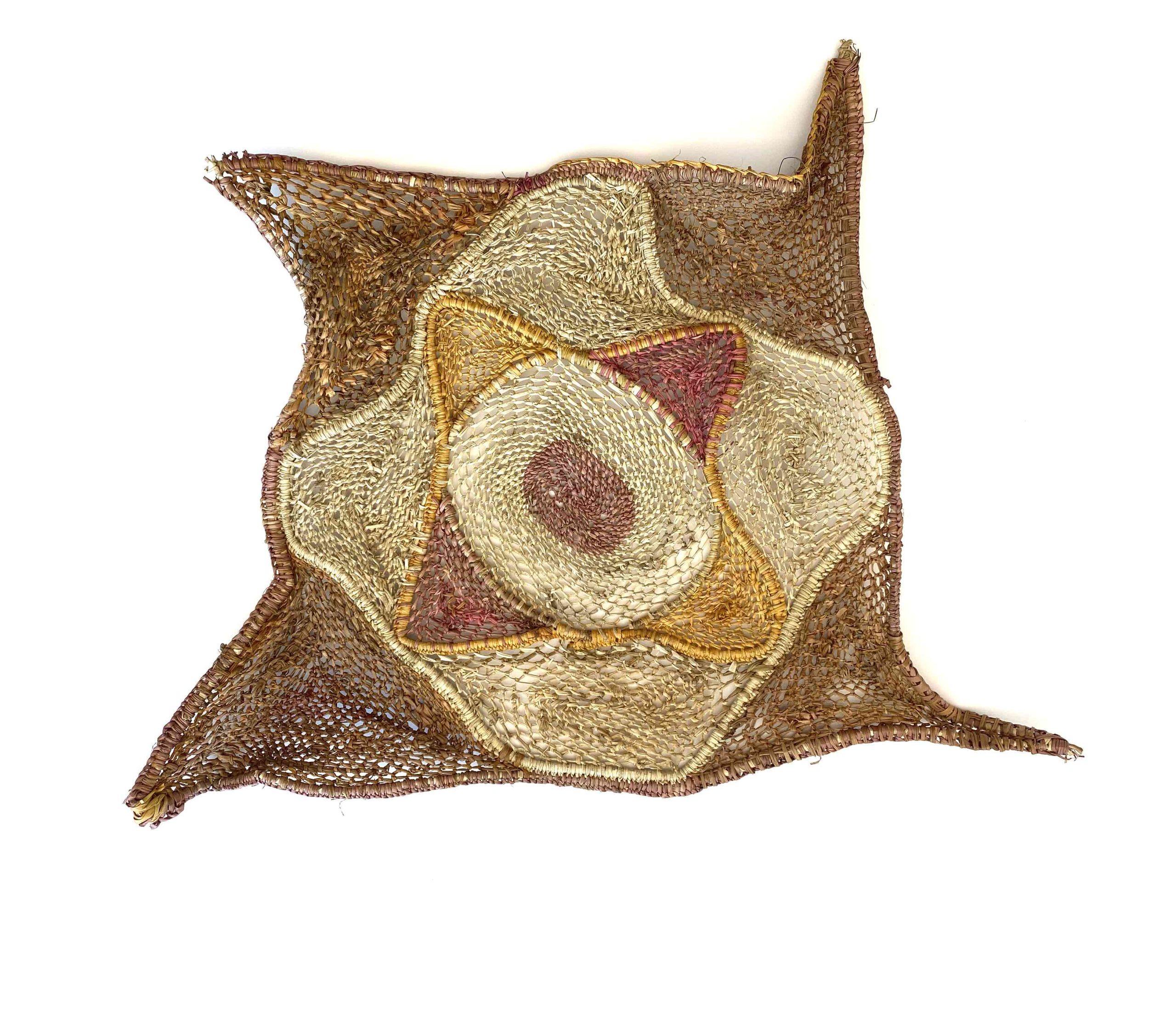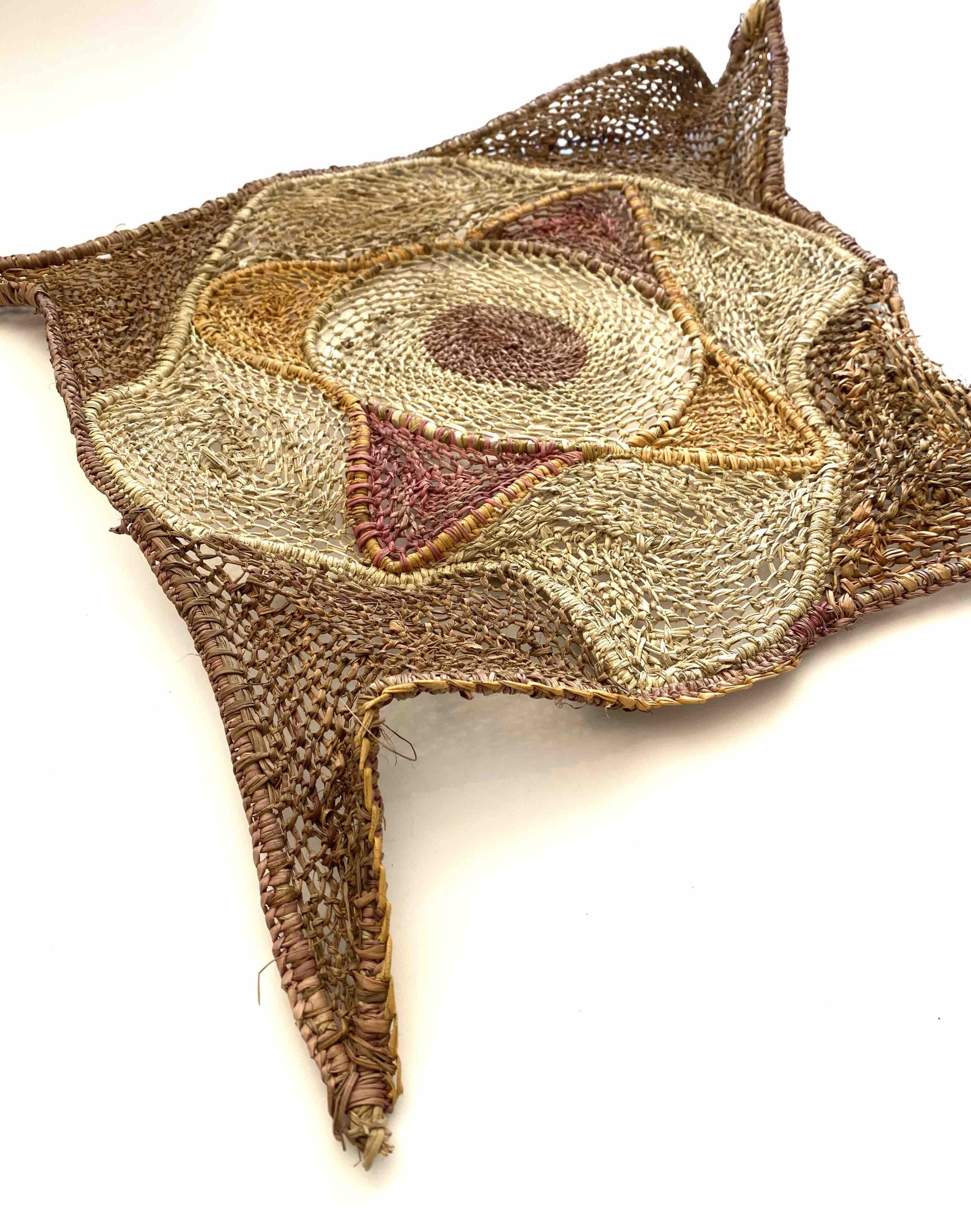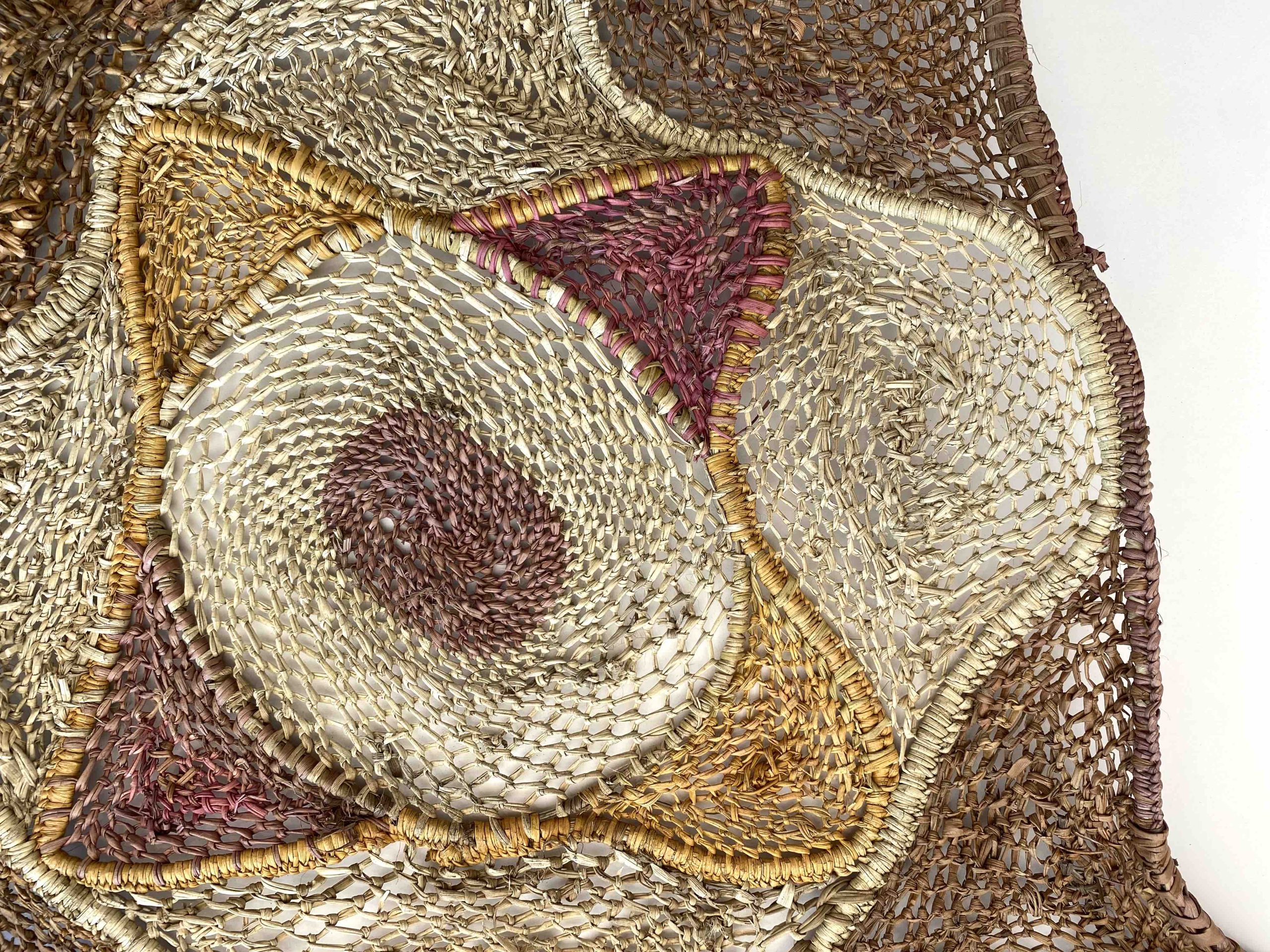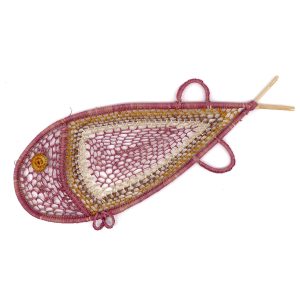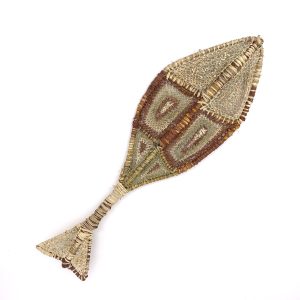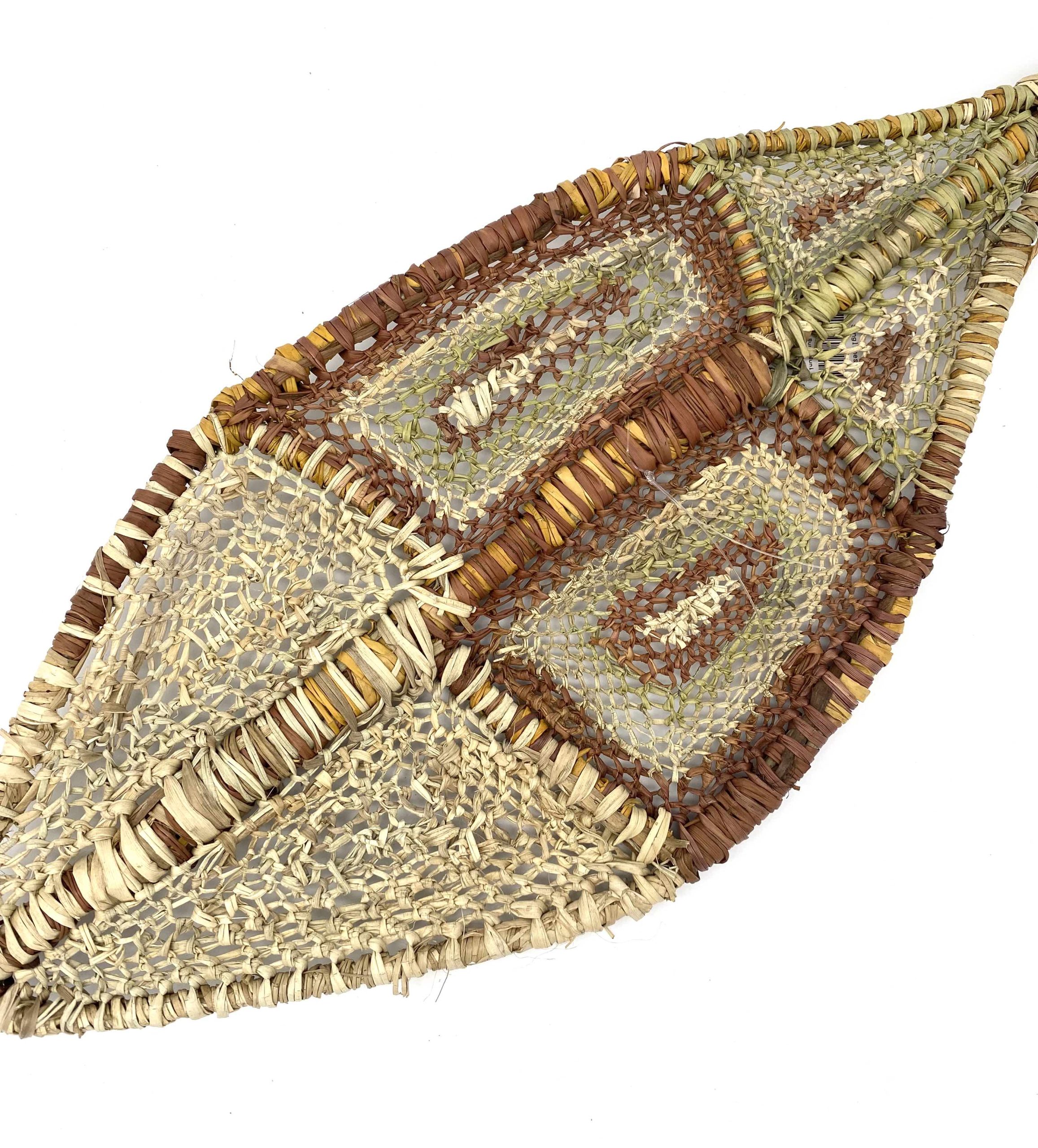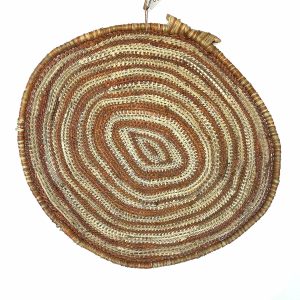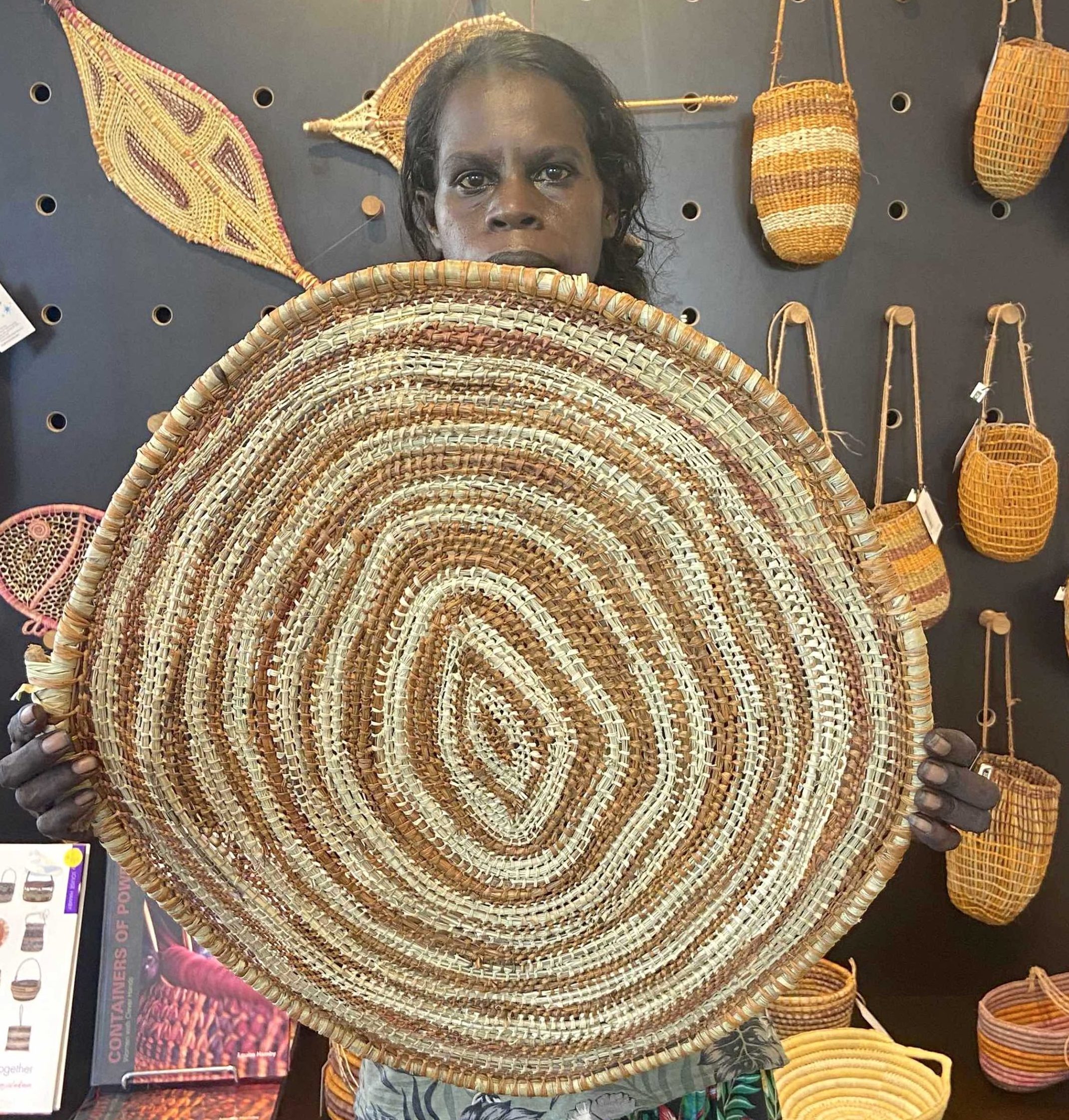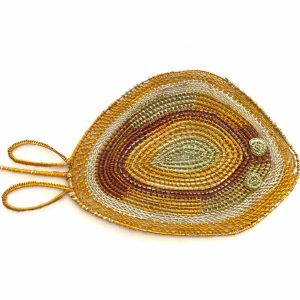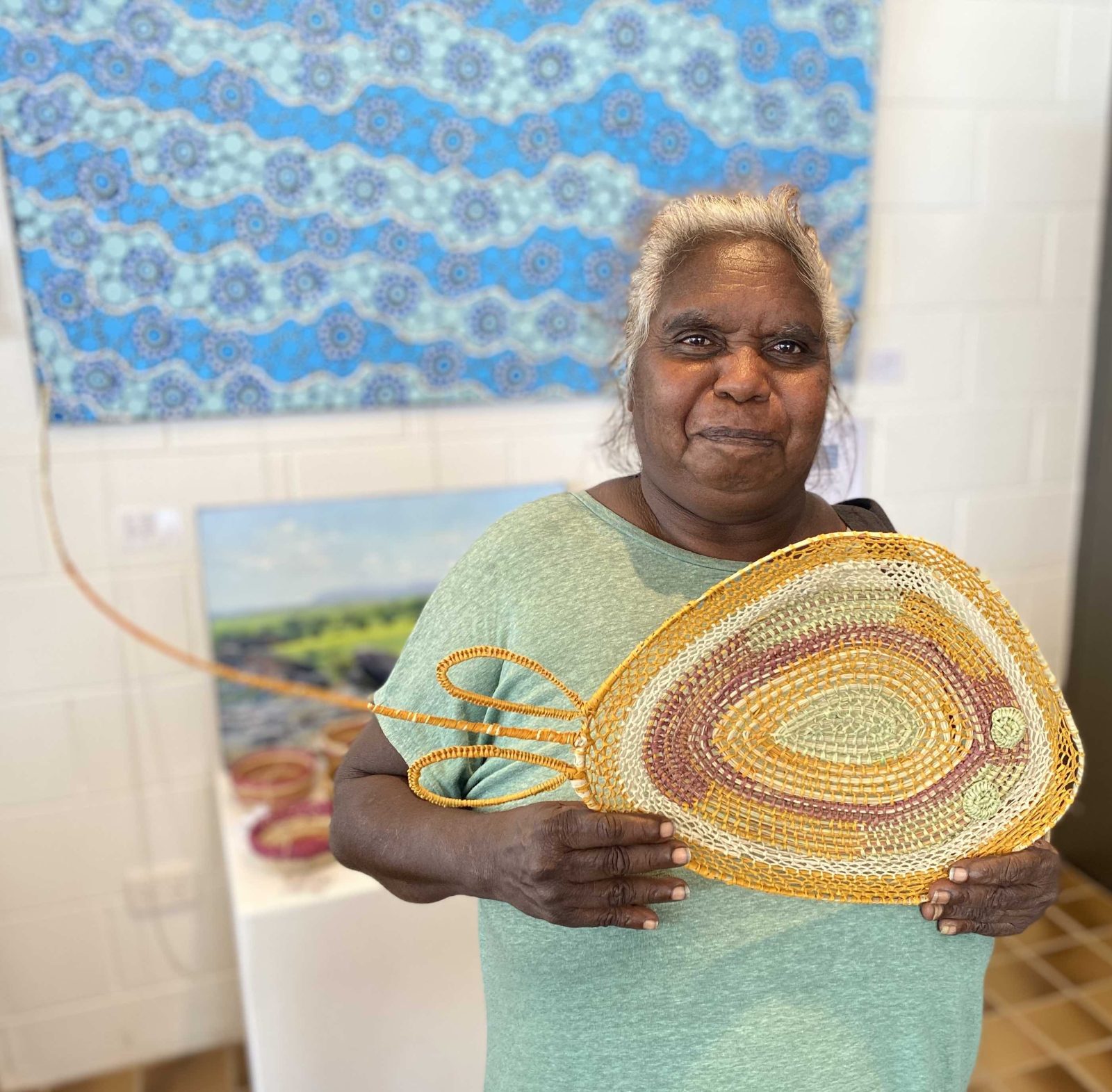Description
Dorothy is an exciting emerging fibre artist. She is sister to acclaimed artist and weaver Anniebell Marrngamarrnga who has been innovating in fibre arts for two decades.
Dorothy’s innovative designs are made from locally collected pandanus and bush dyes which she collects from around Ji-balbal Outstation, on her father’s country and Darwin.
Dorothy Bunibuni Past Group Exhibitions
2023: Kubumi, Flinders Street Station, Melbourne
2022: Northern Waters, Short St Gallery Broome
2021: Together we tell our stories 2021 : Indigenous Glass, Ceramics, Fibre + Sculpture, Sabbia Galley, Redferm, NSW
2021: Lineage, Delmar Gallery, Ashfield NSW
2020: Tarnanthi Art Fair, Lot Fourteen, Adelaide SA
Dorothy predominately uses gun-menama (pandanus spiralis) in her works. To prepare the pandanus the inner leaves of the plant are collected using a hook. Each V-shaped leaf is first split in half along its spine. After removing the sharp spines, the two surfaces of the leaf are then split away from other. After this preparation, the pandanus is boiled in a billycan with plant materials to dye the fibre. Like her contemporaries, she only uses natural dyes and achieves enormous variation.
In 2003, Kuninjku artist Marina Murdilnga brought a revolutionary new form of pandanus weaving to Maningrida Arts & Culture: a flat yawkyawk made from knotted pandanus on a jungle-vine frame, painted with natural pigments. She next explored using dyed pandanus and feathers in this way. Murdilnga’s innovation inspired many other weavers, who are producing an array of beautifully resolved flat figurative works (stingray, butterflies, spiderwebs) and spiritual figures and Ancestral beings.
Reference Maningrida Arts & Culture
About Pandanus weaving
Contemporary Arnhem Land weavers are renowned for their beautifully executed Pandanus weavings and use of local dyes to create a wide palette of colours.
Collecting Pandanus
This is the first part of the process. Only the new growth (erect shoots emerging from the top of the tree) is used and the ladies use a ‘hook stick’ to harvest as they are usually high in the area. It requires strength, skill and knowledge of which trees/places yield the best source. Pandanus grows best in areas that experience seasonal dampness or are near watercourses. The ladies may have walk long distances to find the right grove and then carry their haul back. It is a collaborative process and children will often join them. Harvesting is easiest in the wet season when Pandanus trees everywhere produce new growth.
Stripping
There are a few steps to stripping Pandanus and it is surprisingly difficult to do. An experienced person makes it look easy! On either side of the leaf are thorns/barbs running in the opposite direction to the stripping action and these need to be avoided. A portion of the leaf is stripped from the top to the base to yield a long piece of moist fibre. Then the outer edges (with barbs) are removed and the remaining fibre is also retained. Each leaf yields two lengths of slightly different thickness and quality. These are then put aside to dry or be dyed.
Dyeing
This is almost always done over an open fire in large pots. Colours may be roots, berries, flowers or, in the case of green, a part of the Pandanus plant. Some of the dyes are seasonal and/or very location specific. Things may be added to the dye mix to strengthen and change colours, such as ash. The weavers take great care and pride in creating vivid colours and often will trade dyes and additives. The usual time to dye is immediately after the Pandanus has been stripped.
Weaving
A range of traditional, borrowed and innovated weaving techniques are used in contemporary Pandanus weavings. Larger sculptures are made with a jungle cane structure and infilled with lace like weaving. Smaller sculptures use Pandanus fibre for the framework as well.
References Twined Together (Kunmadj Ngalehnjaleken)
In 2005 Injalak Arts published Twined Together (Kunmadj Ngalehnjaleken) in collaboration with academic and author Dr Louise Hamby (editor). This is now the definitive text; a unique reference on fibre works from Western Arnhem Land, Northern Territory.
“This book is a guide for those with artistic, anthropological, linguistic, historical and fibre interests, providing insight into the previously unexplored complexities of fibre art from the region. Photographic essays feature collection, preparation, making and special features such as handle variations. The women artists who make the bags, baskets and mats are Kunwinjku speakers.”
Lavishly illustrated with over 600 photographs
ISBN: 0 646 44608 8 / 0646446088

